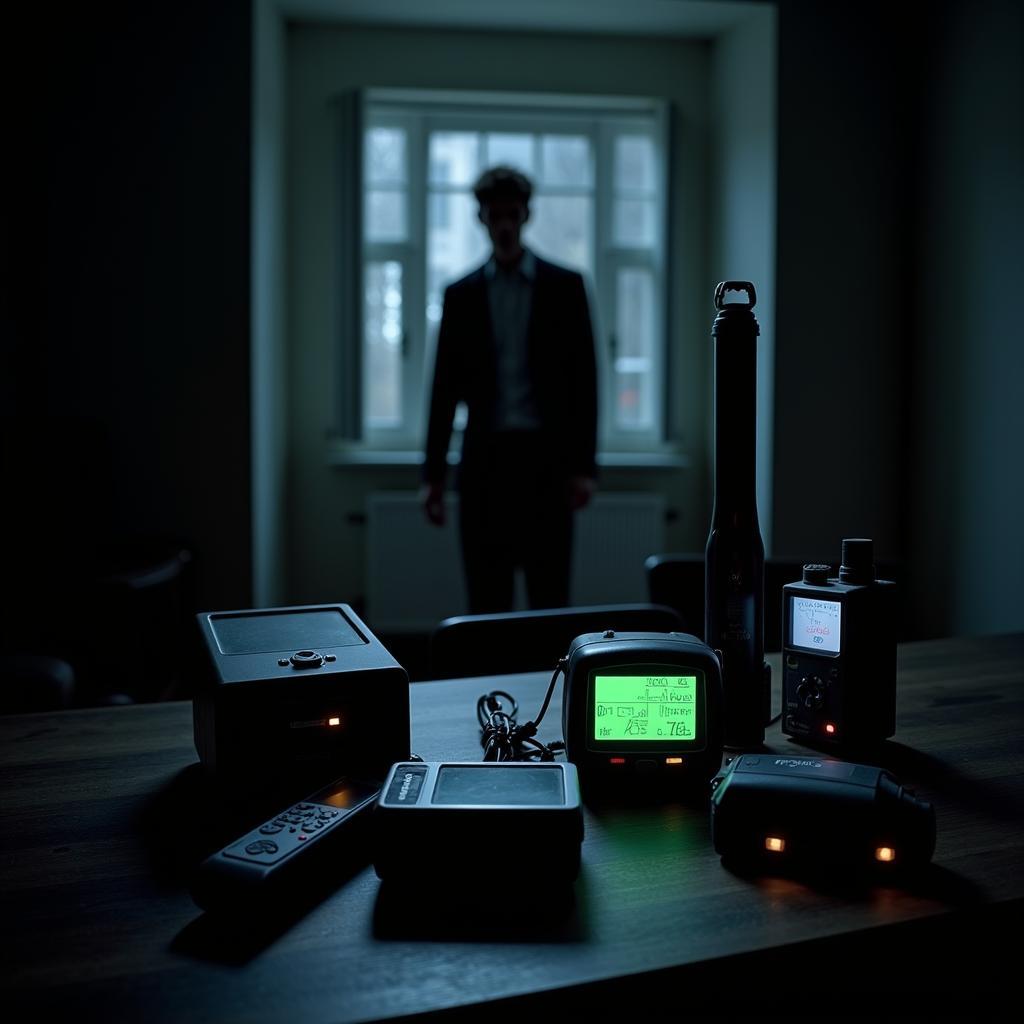The Inductive Method Of Research is a powerful tool for exploring the unknown, particularly in fields like paranormal investigation. It allows us to move from specific observations to broader generalizations, building theories from the ground up. This approach is crucial when dealing with phenomena that defy easy explanation, offering a structured way to analyze evidence and formulate hypotheses. Just after observing a few seemingly unrelated paranormal events, researchers might use inductive reasoning to develop a working theory. Now, let’s delve deeper into this fascinating research method.
Understanding the Inductive Research Method
The inductive method begins with detailed observations and data collection. Researchers immerse themselves in the subject matter, meticulously documenting every detail. This could involve analyzing EVP recordings, studying photographs of unexplained phenomena, or interviewing witnesses of paranormal activity. The goal is to gather a rich dataset that can serve as the foundation for developing theories. From these specific observations, patterns and regularities begin to emerge. These patterns are then used to formulate tentative hypotheses, which are tested through further observation and data collection. Unlike deductive reasoning which starts with a general theory and tests specific predictions, the inductive method works in the opposite direction. It’s about building knowledge from the ground up.
different types of research studies
This iterative process of observation, pattern recognition, and hypothesis formation is central to inductive research. It allows for flexibility and adaptability, which is essential when exploring complex and often unpredictable phenomena like those encountered in paranormal research.
Applying Inductive Reasoning in Paranormal Investigations
Imagine investigating a series of reported hauntings in a historic house. Applying the inductive method of research, you would start by gathering detailed accounts from witnesses, noting commonalities in their experiences. Perhaps they all report cold spots in a specific room, or the sound of footsteps at a particular time of night. These specific observations form the basis of your investigation.
From these shared experiences, you might hypothesize that the house is indeed haunted by a specific entity. This hypothesis, derived inductively from the collected data, then guides further investigation. You might set up recording equipment in the identified cold spot, or attempt communication with the suspected entity. This continuous cycle of observation and hypothesis refinement is at the heart of the inductive method.
 Inductive Reasoning in Paranormal Investigation
Inductive Reasoning in Paranormal Investigation
Advantages and Challenges of Inductive Research
The inductive method has several advantages, particularly in the realm of Paranormal Research. Its flexibility allows researchers to adapt to unexpected findings and explore new avenues of inquiry. It also encourages creativity and open-mindedness, essential qualities when dealing with the unknown. However, it also presents certain challenges.
One major challenge is the potential for bias. Since inductive reasoning relies heavily on interpretation, researchers’ preconceived notions can influence their observations and the conclusions they draw. It’s crucial to maintain objectivity and rigorously test hypotheses to mitigate this risk. Another challenge is the question of generalizability. While inductive research can generate compelling theories, these theories may not always apply to other cases or contexts.
coding for qualitative research
“Inductive research is like piecing together a puzzle without knowing the final image,” says Dr. Amelia Hayes, a leading researcher in parapsychology. “It requires patience, meticulous observation, and a willingness to embrace uncertainty.”
How Does Inductive Reasoning Differ from Deductive Reasoning?
While both inductive and deductive reasoning are valuable research tools, they approach knowledge acquisition differently. Deductive reasoning starts with a general theory and tests specific predictions. For example, if the theory is that all ghosts are residual energy, a deductive approach would involve testing specific predictions about how this energy manifests. Conversely, inductive reasoning starts with specific observations and builds towards a general theory.
 Inductive vs. Deductive Reasoning
Inductive vs. Deductive Reasoning
“The strength of inductive research lies in its ability to generate new theories from observed data,” adds Professor Charles Blackwood, a renowned expert in anomalous phenomena. “It’s the perfect tool for exploring the fringes of scientific understanding, where established theories often fall short.”
Inductive Method of Research: Best Practices
To enhance the reliability and validity of inductive research, especially in paranormal investigations, certain best practices should be followed:
- Maintain detailed records: Document every observation, including dates, times, environmental conditions, and witness testimonies.
- Seek corroborating evidence: Look for multiple sources of evidence to support your observations and hypotheses.
- Be open to alternative explanations: Consider all possible explanations for the observed phenomena, even those that may challenge your initial assumptions.
- Engage in peer review: Share your findings with other researchers and solicit feedback to ensure objectivity and rigor.
code book example qualitative research
Conclusion: Embracing the Inductive Approach in Paranormal Research
The inductive method of research offers a valuable framework for exploring the mysteries of the paranormal world. By meticulously observing, analyzing, and interpreting data, we can begin to understand these complex phenomena and build theories that can guide future investigations. While challenges exist, the potential for discovery makes the inductive approach a powerful tool in the ongoing quest to understand the unexplained. Remember, thorough documentation, objective analysis, and a willingness to adapt are key to successful inductive research.
 Inductive Research Conclusion
Inductive Research Conclusion
FAQ
- What is the main difference between inductive and deductive reasoning?
- How can I avoid bias in inductive research?
- What are some examples of inductive reasoning in everyday life?
- What are the limitations of the inductive method?
- How can I strengthen the validity of my inductive research?
- Is inductive research more suitable for exploratory or confirmatory studies?
- How can I apply the inductive method to other areas of research?
which definition best describes qualitative research
For further support, contact us at Phone Number: 0904826292, Email: research@gmail.com Or visit us at: No. 31, Alley 142/7, P. Phú Viên, Bồ Đề, Long Biên, Hà Nội, Việt Nam. We have a 24/7 customer support team.